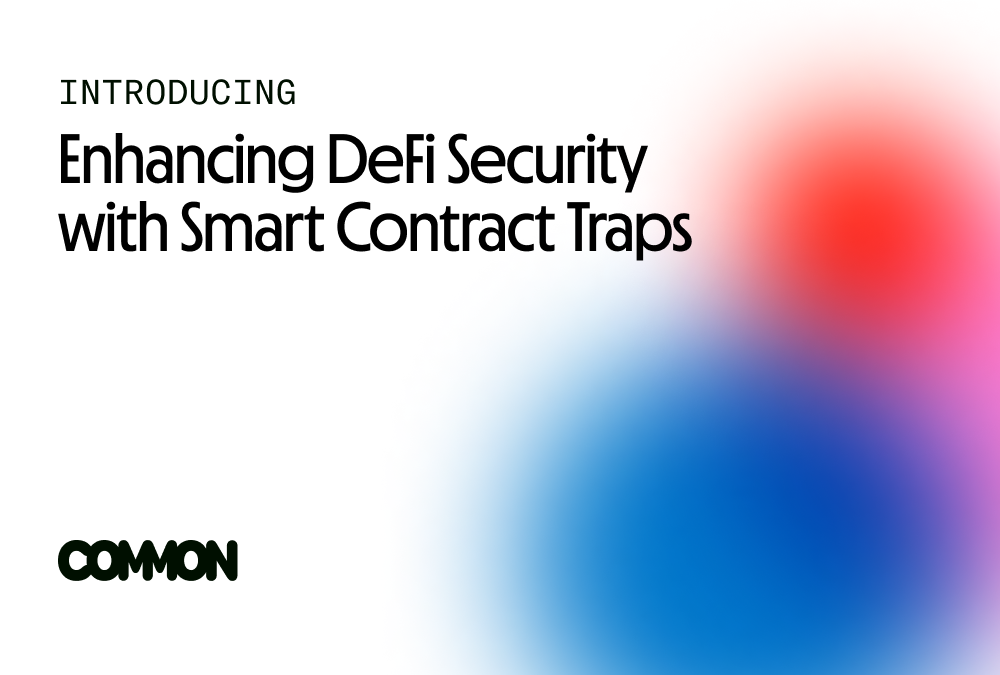Drosera is Enhancing DeFi Security with Smart Contract Traps

Despite rapid changes for DeFi, security is always a top priority for builders. We got to Trap and Yap with FDR and Boba from Drosera to learn about how they’re tackling security.
Their approach involves smart contracts to create off-chain infrastructure for security monitoring, risk management, and more.
Here’s what we gathered from our convo!
What is Drosera?
Drosera is an EVM-based protocol that enables general-purpose infrastructure powered by smart contracts. Named after Venus flytraps, the project uses "traps" (specialized smart contracts that operate off-chain), to monitor for security threats, manage risk, and provide various other services to DeFi protocols.
The name symbolizes the project's purpose: just as the Drosera plant waits to catch bugs, Drosera's traps wait to catch vulnerabilities and threats in the DeFi ecosystem.
How Traps work
Traps are off-chain smart contracts executed by node operators. Unlike traditional onchain transactions that require gas fees, traps are executed off-chain, making them more cost-efficient. This allows for complex logic and analysis that would be too expensive to run directly onchain.
Key benefits of traps include:
- Capital efficiency: Running complex logic off-chain saves significant gas costs
- Developer-friendly: Written in Solidity, making them accessible to existing Ethereum developers
- Verifiable: Results are cryptographically verifiable
- Flexible: Can be used for security monitoring, risk management, trading, gaming, and more
Current status: open testnet
Drosera recently announced their open testnet, inviting developers and users to experiment with the technology. They've seen a significant uptick in users exploring the platform, creating traps, and even setting up nodes independently.
To make the testnet more accessible to non-technical users, the team has developed applications that showcase the technology without requiring Solidity knowledge. Their first such application is an onchain chess game that uses traps to validate moves off-chain, creating a fast, cheap, and verifiable gaming experience.
Use cases
While Drosera was initially a security and risk management solution, the team has discovered that the technology has much broader applications:
Security and risk management
- Monitoring for exploits and vulnerabilities
- Analyzing stablecoin depegs
- Treasury management
- Insurance premium calculation
DeFi operations
- Automated trading strategies
- DEX arbitrage
- Cross-chain operations
DAO governance
- Automating governance decisions based on predefined metrics
- Analyzing onchain votes and triggering actions when consensus is reached
- Implementing milestone-based execution of strategies
Gaming and entertainment
- Chess, poker, blackjack, and other games that require verification
- Randomness generation for lotteries
The team's community-centered approach
The Drosera team has taken a grassroots approach to building their community. Rather than focusing on flashy marketing campaigns or gimmicks, they've prioritized direct engagement with developers, security researchers, and potential users.
They emphasize personal connections and genuine conversations over corporate-style outreach, reaching out to technical communities like public audit platforms and actively engaging with security researchers on Twitter.
Looking forward
The Drosera team feels confident about their protocol's current state after multiple audits and extensive testing. They're now focused on refinement and ensuring their nodes remain lightweight and accessible to anyone who wants to participate.
As they move toward mainnet, they anticipate that security researchers and developers will begin creating standards and libraries specifically for mitigating risk in DeFi.

